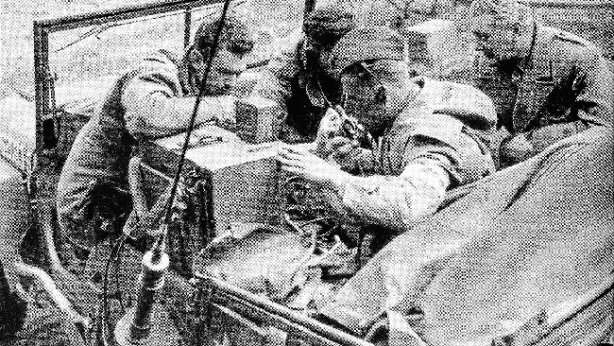This article was translated by John R. Bopp
The truth is right in front of our eyes, but it’s hidden behind the interference and distractions that are made by those who do not want us to see.
If you’ve been following our site, you’ll know, as is logical, that we’ve paid a lot of attention to the bombing of Guernica. Now, on its 75th anniversary, it’s not easy for us to read the reports being published in the “Today in history” sections. It’s not easy because either we have to face the image of the savage attack led by fascists who were determined to destroy everything that didn’t fit in with their miserable vision of things; or because we have to face the lies that those responsible for the bombing, and their intellectual and political heirs, publish to make the world believe that the importance of the Bombing of Guernica is nothing more than international anti-Francoist propaganda which is trying to stain the image of the Caudillo and his Crusade for the Liberation of Spain.
From 1937 until today, the range of lies told about Guernica has covered the whole gamut. From “the city was burned down by the red hordes on the order of Basque President Agirre”, which is what was claimed by fascist propaganda in the first years, to “there were only a few dead, and it was turned into an icon by Republican propaganda”, without forgetting “the destruction of the city is the fault of the Basque government for not putting a fire station in the city”. All these lies, told repeatedly by the insurgents and their political heirs through the powerful media have found support from unexpected support from toy historians who, with no criteria or methodology or common sense, have dedicated themselves to counting the number of local dead in the bombing using unscientific criteria and offering us data that backs up the ideas of those who argue that Guernica was not a martyr city. We’ve already spoken of this, some time ago, so we won’t repeat ourselves here.
We’ve also spoken about one of the journalistic heroes who managed to, at least in part, keep the fascist lies from spreading around the world, by telling what has become the generally accepted description of what happened in that Basque town. We are referring, of course, to George L. Steer, who, with his chronicles in the The Times and the The New York Times, and later with his book on his experiences in the Basque Country during the war, exposed the truth about what happened to the world. We’ve spoken of him many times in detail on this blog.
But really, these stories keep coming up. We have to recognize that, until recently, we hadn’t heard of Noel Monks. He was a correspondent for the Daily Express who was also a witness to the bombing of Guernica. He is spoken of by Luis de Guezala in his article dated April 21 of last year in Deia. This is an indisputable chronicle made by a neutral observer of what the town was like on the day of the bombing, how the fascist aviators behaved, and what the consequences of the bombing were, including the number of dead.
“I was back in the blackened town at dawn. The flames had died, but the ruins were smoldering. I saw more than eight hundred bodies. An estimated 300 more I couldn’t see, because they weren’t bodies: they were just hands, legs, arms, heads, bits of flesh. Many bodies had bullet wounds: airplane machine-gun bullets”.
Luis de Guezala’s article about Monks can’t be missed, and, after reading it, we’ve decided to include this Australian journalist in the group of Friends of the Basques, for clearly describing what really happened in Guernica. There’s something else that really impresses us about his texts. This is a man who had been in the Italo-Abyssinian War, had covered the Spanish Civil War from both sides, had participated in the Second World War, and who wrote the following about the bombing of Guernica:
“I think I’d be able to forget the hatred which takes possession of me whenever I recall that awful sight–the greatest atrocity of modern war. But at present I can simply hate. I hate the soldiers who thought they were doing their duty in killing innocent men, women, and children. I hate the generals who gave the orders. I hate the mealy-mouthed propagandists who tried to deny or explain the facts away. But most of all I hate war–the institution that caused it.”
There are more statements to remember the ignominy of what happened back then. Here we have the description of the situation that the British Merchant Marine captain Still, in charge of the Hamersley, gave to Noel Monks, the Catholic Australian correspondent for the Daily Express, about what was happening to the Basques:
“There’s something about this war that gives me the creeps. Could you ever meet a finer lot of people in the world than these Basques — home-loving, industrious, religious? And they’re being wiped out with the blessing of the Pope. It makes me afraid for humanity.”
If you’re interested in reading more chronicles published in the Daily Express about the bombing of Guernica, you have a couple options::
- You can download them for £5 from the archives of the Daily Express. You can click here, and where it says “Simple keyword search”, type “Guernica”, and search. Don’t forget to order the results by date, to make it easier.
- Get here issue nº 41 of the magazine Hermes (pg. 54-77) frome the Sabino Arana Fundazioa, where his entire testimonial has been translated by no less than Joseba Aguirre, son of Basque President Agirre
Don’t miss this article and help spread the Truth. The memory of those innocent dead in Guernica, and in all wars, deserves it.
Deia 21/4/2012 – Euskadi
Noel Monks: odio a la guerra y amor a la verdad

Ahora que conmemoramos el 75 aniversario del bombardeo de Gernika, desde la Biblioteca de Sabino Arana Fundazioa recordamos uno de sus libros, publicado en 1940, que con el título de Nothing but Danger-Nada más que Peligro, recopila las crónicas de diez corresponsales británicos en la Guerra Civil. Uno de ellos, el que nos interesa para este artículo, fue Noel Monks, uno de los tres corresponsales británicos, junto a Steer y Holme, que estuvieron en Bizkaia en aquellos trágicos días de 1937. Menos conocido y reconocido entre nosotros que su colega George L. Steer, famoso con toda justicia por sus crónicas recopiladas en su libro El Árbol de Gernika, y a quien todos los vascos creo que debemos gratitud por su denuncia valiente y profesional de las atrocidades que los sublevados cometieron al invadir nuestro territorio.
(Follow) (Automatic translation)
Last Updated on Apr 26, 2022 by About Basque Country






























